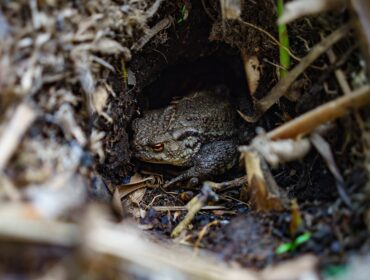The Suriname toad (also called the Pipa pipa) is a rather unique toad that gives birth from its skin. A bizarre animal native to South America, the Suriname has a triangular-shaped head and a body so flat it looks like roadkill — an adaptation to better hide from predators. They live primarily in water and spend their days splayed out, unlike most toads that sit up on their hind legs.
The Suriname toad loves silty, still ponds, marshes, and slow moving streams. They cover themselves with leaf litter as they hang out on the bottom of their muddy homes. These curious habits are all an attempt to survive successfully.
Another skill unique to the Suriname toad is the way in which it detects its prey. Searching with webbed fingers, it senses movement of a potential meal and then begins feeding. Rather than using a tongue, it uses suction to draw prey into its mouth to feed. Only two other amphibians use this vacuum-like strategy!
Babies On Board
Reproduction of the Suriname toad is precipitated by the cold, rainy season in its native waters. The male toad begins the mating ritual with an underwater clicking sound made by bones in the throat area, rather than vocal chords. The male and female begin to somersault together for over 24 hours, and each egg is singularly released by the female which is then fertilized by male.
More than 100 viable eggs are embedded in the female’s skin on her back where they are carried for many months, with no need for the tadpole stage most amphibians go through. The babies form completely on their mother’s back and are released, one after the other, underwater. The female then returns to her solitary existence to await the beginning of a new cycle.
Since Suriname toads are omnivorous, they eat many species of aquatic plant and animal life. You might suspect they would eat their young as many other amphibians do, but rather, they exhibit maternal instincts and do not feed on their newly released baby toads. Check out this fascinating video of the Suriname toad giving birth!
Featured Image from Dan Olsen/Shutter Stock




